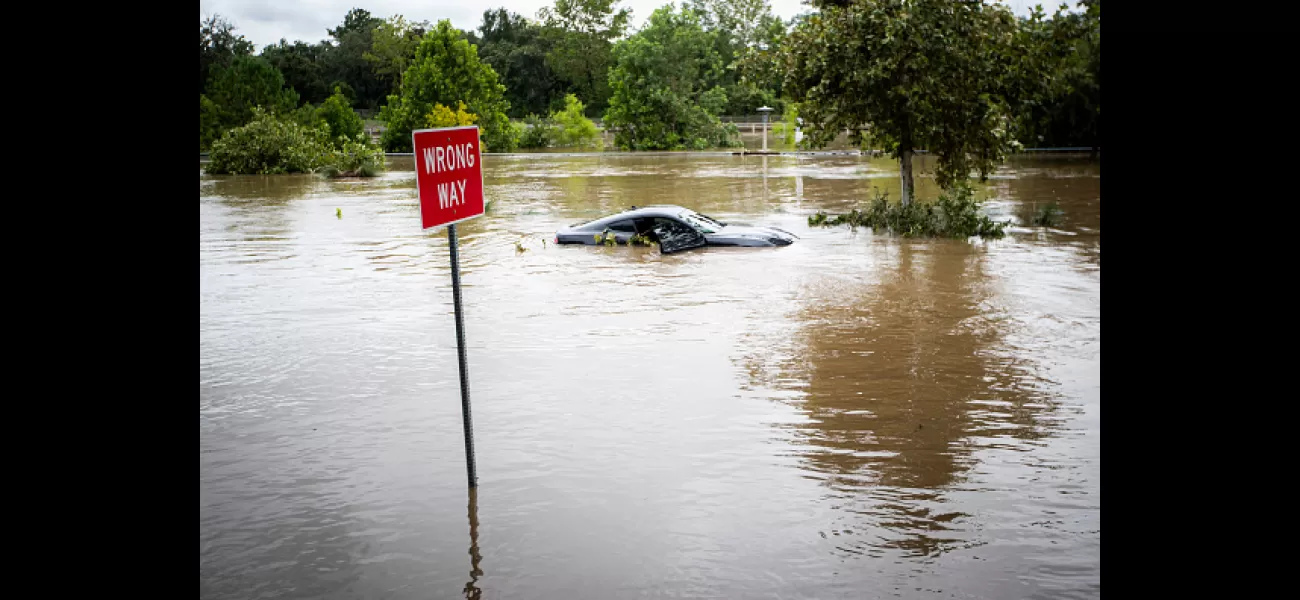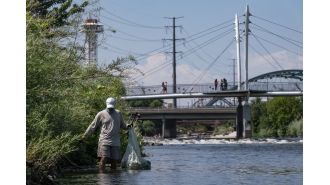Hurricane Beryl caused chaos in Texas, could take days to restore electricity.
Beryl's impact shows a gloomy sign of the expected harsh hurricane season in the Atlantic this year.
July 9th 2024.

The aftermath of Hurricane Beryl has brought about a dire situation in Texas as the scorching temperatures continue to take a toll on the state. The hurricane made landfall on July 8, leaving behind a trail of destruction and claiming the lives of at least six people. The impact of the storm was felt by over 2.7 million customers who were left without power. Even as we speak, more than 2.2 million people are still experiencing blackouts and authorities fear that this could go on for days, or even weeks. This is a major concern, especially with the high heat indices reaching triple digits and the lack of air conditioning making it even more unbearable.
The National Weather Service issued a statement this morning, highlighting the potential danger of the situation. They warned that the combination of the intense heat and the strenuous cleanup efforts after Beryl could result in hazardous heat conditions. The majority of the power outages are in southeast Texas, where the heat index is expected to surpass 105 degrees Fahrenheit. While this may not typically warrant a heat advisory in the region, the absence of air conditioning after a severe storm changes the entire dynamic.
In a press conference held yesterday, Thomas Gleeson, the chairman of the Public Utility Commission of Texas, mentioned that it could take several days to restore power. In some areas, like the hard-hit Galveston, it could take up to two weeks before electricity is fully restored. This is in line with the findings of the US Energy Information Administration, which states that power outages in the country have become longer over the past decade, largely due to major events like hurricanes and winter storms.
These prolonged blackouts pose a serious risk to the public, especially when it comes to heat-related illnesses and deaths. This is even more concerning as global temperatures continue to rise due to the emission of greenhouse gases from fossil fuels. As a result, we are seeing more frequent and intense heat waves, which are made worse by the rising sea temperatures. In fact, Hurricane Beryl broke records as the strongest tropical storm to form in the Atlantic this early in the hurricane season. It quickly intensified into a Category 5 storm, causing destruction in the Caribbean and Mexico before weakening to a Category 1 and hitting Texas. Although the sustained wind speeds were lower, Beryl still managed to bring over 10 inches of rain and a storm surge of up to six feet along the Texas Gulf Coast.
Unfortunately, this is just a glimpse of what is predicted to be a severe Atlantic hurricane season this year. Although Beryl has weakened, it is still expected to bring heavy rains as it moves northeast this week, according to the NWS. The impact of this hurricane is a grim reminder of the consequences of rising global temperatures and the increasing intensity of storms. It is crucial that we take steps towards reducing our carbon footprint and mitigating the effects of climate change.
The National Weather Service issued a statement this morning, highlighting the potential danger of the situation. They warned that the combination of the intense heat and the strenuous cleanup efforts after Beryl could result in hazardous heat conditions. The majority of the power outages are in southeast Texas, where the heat index is expected to surpass 105 degrees Fahrenheit. While this may not typically warrant a heat advisory in the region, the absence of air conditioning after a severe storm changes the entire dynamic.
In a press conference held yesterday, Thomas Gleeson, the chairman of the Public Utility Commission of Texas, mentioned that it could take several days to restore power. In some areas, like the hard-hit Galveston, it could take up to two weeks before electricity is fully restored. This is in line with the findings of the US Energy Information Administration, which states that power outages in the country have become longer over the past decade, largely due to major events like hurricanes and winter storms.
These prolonged blackouts pose a serious risk to the public, especially when it comes to heat-related illnesses and deaths. This is even more concerning as global temperatures continue to rise due to the emission of greenhouse gases from fossil fuels. As a result, we are seeing more frequent and intense heat waves, which are made worse by the rising sea temperatures. In fact, Hurricane Beryl broke records as the strongest tropical storm to form in the Atlantic this early in the hurricane season. It quickly intensified into a Category 5 storm, causing destruction in the Caribbean and Mexico before weakening to a Category 1 and hitting Texas. Although the sustained wind speeds were lower, Beryl still managed to bring over 10 inches of rain and a storm surge of up to six feet along the Texas Gulf Coast.
Unfortunately, this is just a glimpse of what is predicted to be a severe Atlantic hurricane season this year. Although Beryl has weakened, it is still expected to bring heavy rains as it moves northeast this week, according to the NWS. The impact of this hurricane is a grim reminder of the consequences of rising global temperatures and the increasing intensity of storms. It is crucial that we take steps towards reducing our carbon footprint and mitigating the effects of climate change.
[This article has been trending online recently and has been generated with AI. Your feed is customized.]
[Generative AI is experimental.]
0
0
Submit Comment





